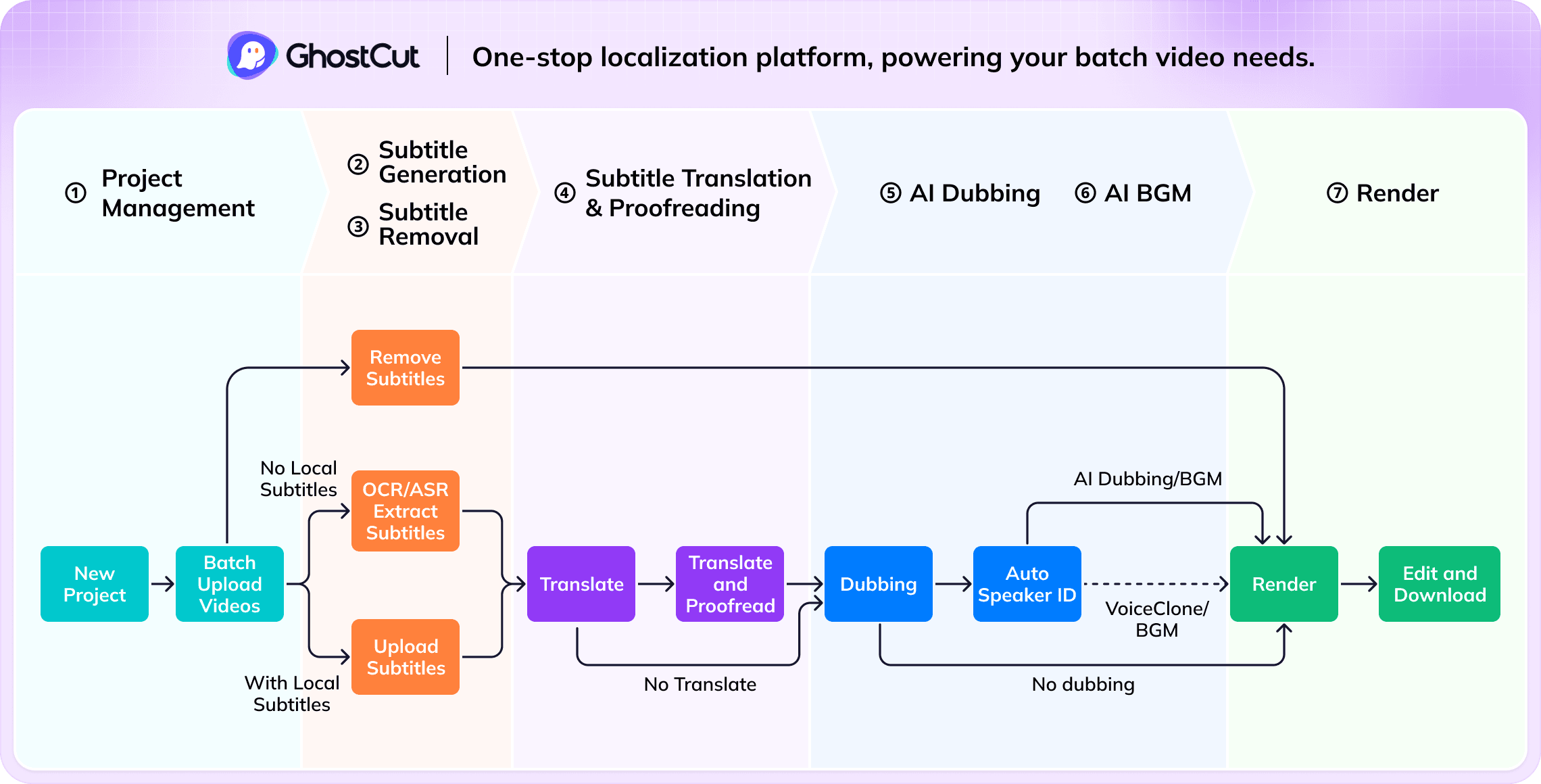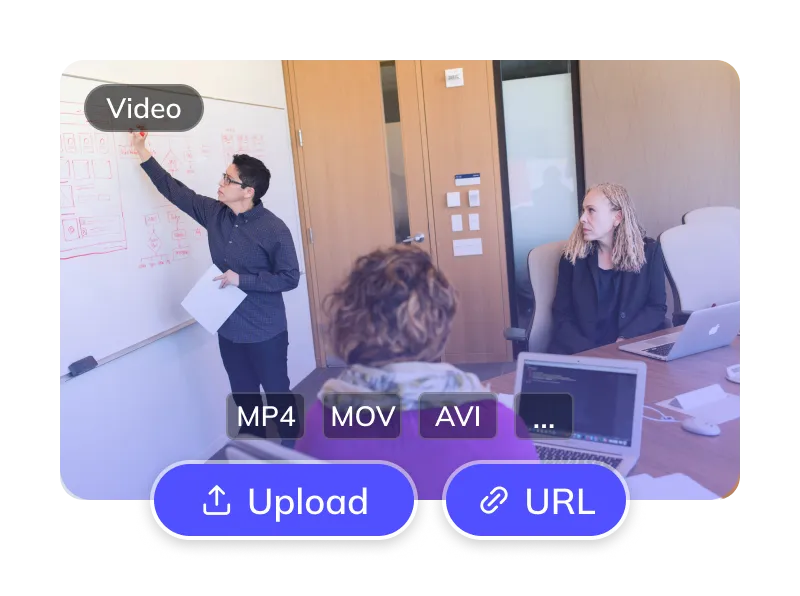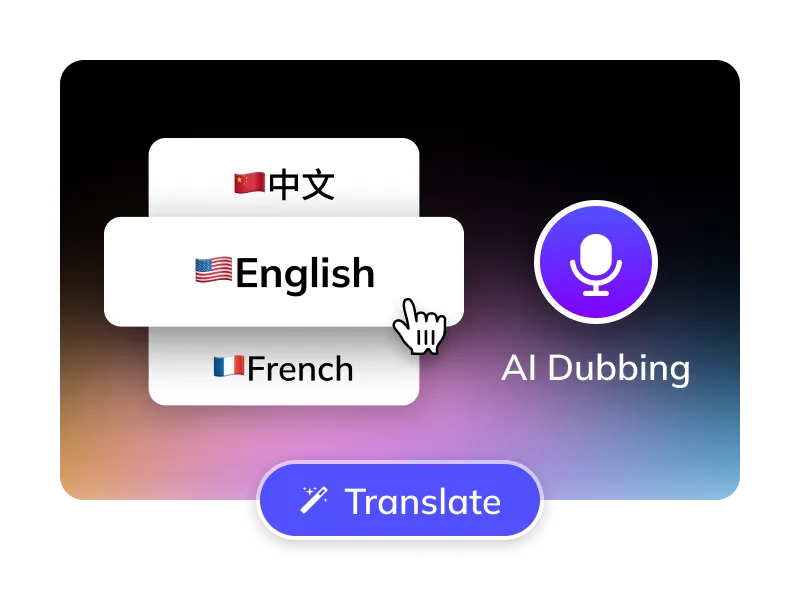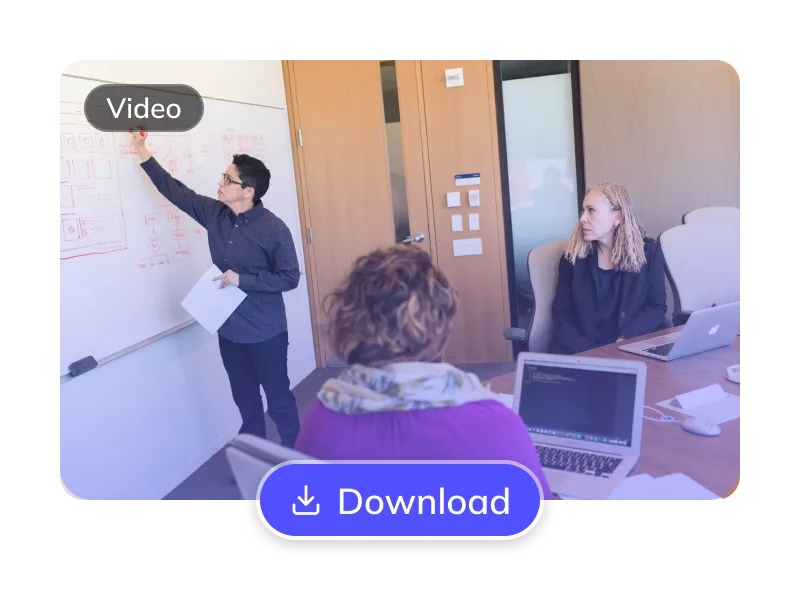How to Translate Japanese Videos to English ?
Translate Japanese Videos to Thai in 3 Easy Steps
Trusted by 1,500,000+ Global Creators and Businesses
Why GhostCut for Your Video Translations?
GhostCut is your all-in-one AI solution for translating Japanese content into natural, engaging Thai.
Effortless Project Management
Manage Japanese assets, subtitles, & Thai videos. Batch process projects efficiently.
Pinpoint Thai Accuracy
Up to 99.5% accurate. Optimized for Japanese-to-Thai with LLM calibration & multi-agent review for culturally fluent Thai translations.
Lifelike Thai AI Dubbing
Choose from diverse, human-like Thai AI voices (US/UK accents). Emotion-cloning technology captures original tone for natural Thai delivery.
Flexible Japanese Subtitle Options
Optionally erase original Japanese hardsubs for a clean slate. Translate embedded Japanese subtitles directly.
Smart Multi-Speaker ID (Japanese)
AI detects multiple speakers in Japanese videos. Assign or clone distinct Thai voices per character, with cross-episode consistency for complex Thai dubs (dramas, interviews).
Efficient Batch Processing & API
Batch translate and dub 100s of Japanese videos to Thai at once. Seamlessly integrate with our robust API.
Versatile BGM Control
Keep or mute original BGM. Our unique tech can also isolate sound effects, meeting diverse copyright and distribution needs.
Unbeatable Value
Flexible Japanese-to-Thai plans. Try core features free. Automated pro service from just $0.1/minute.
Easy Online Access
No downloads. Instantly translate Japanese videos to Thai online. Works on Windows, Mac, & major mobile browsers for cloud processing anywhere.
The GhostCut Edge: Unmatched Accuracy, Speed, and Value.
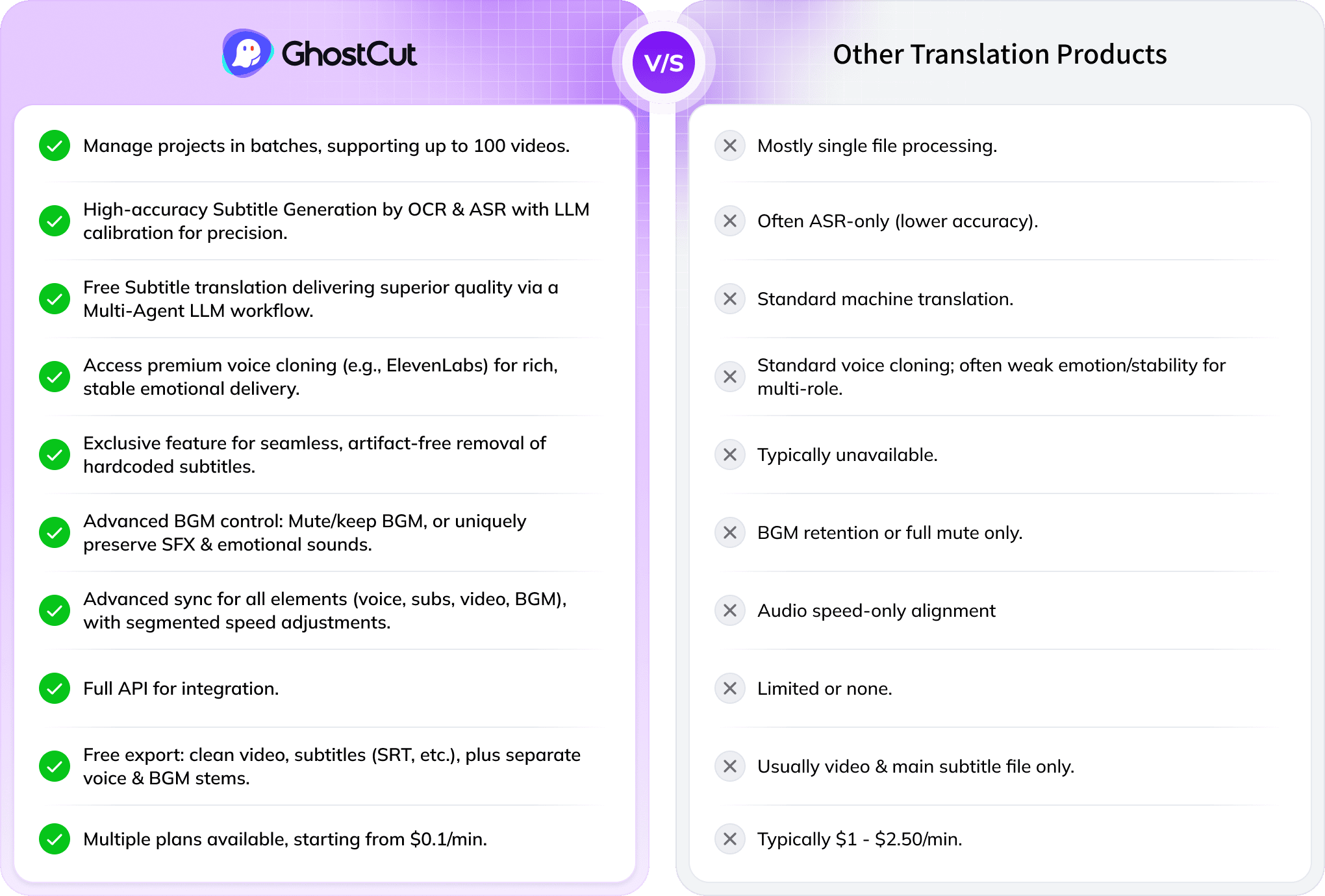
Every Algorithmic Optimization, Engineered for Quality Thai Video
Mastering Long-Form Japanese Drama & Multi-Character Dubbing
Translating a 100-minute Japanese drama with 4000+ lines and many characters into Thai is tough. Standard AI struggles to tell speakers apart, causing errors. GhostCut’s multi-modal AI (video, voice, text) excels in long-form, multi-speaker content, ensuring accurate, consistent character voices across entire series.
Translate Now

Seamless Thai Dubbing & Perfect Lip-Sync
GhostCut ensures natural Thai audio flow by treating related subtitles as whole ideas for TTS. It then precisely times new Thai subtitles. Since Japanese-to-Thai translation can change speech length, our AI expertly adjusts the new Thai audio, subtitles, video, and BGM to maintain perfect sync, just like a seasoned editor.
Translate NowBoost ROI with Flawless Japanese Subtitle Removal
Original Japanese hardsubs can limit your video's global appeal. GhostCut’s AI doesn't just blur; it intelligently reconstructs the background obscured by Japanese subtitles, even complex ones, for a perfectly clean, high-quality visual. This means better viewer engagement, longer watch times, and higher ROI.
Translate Now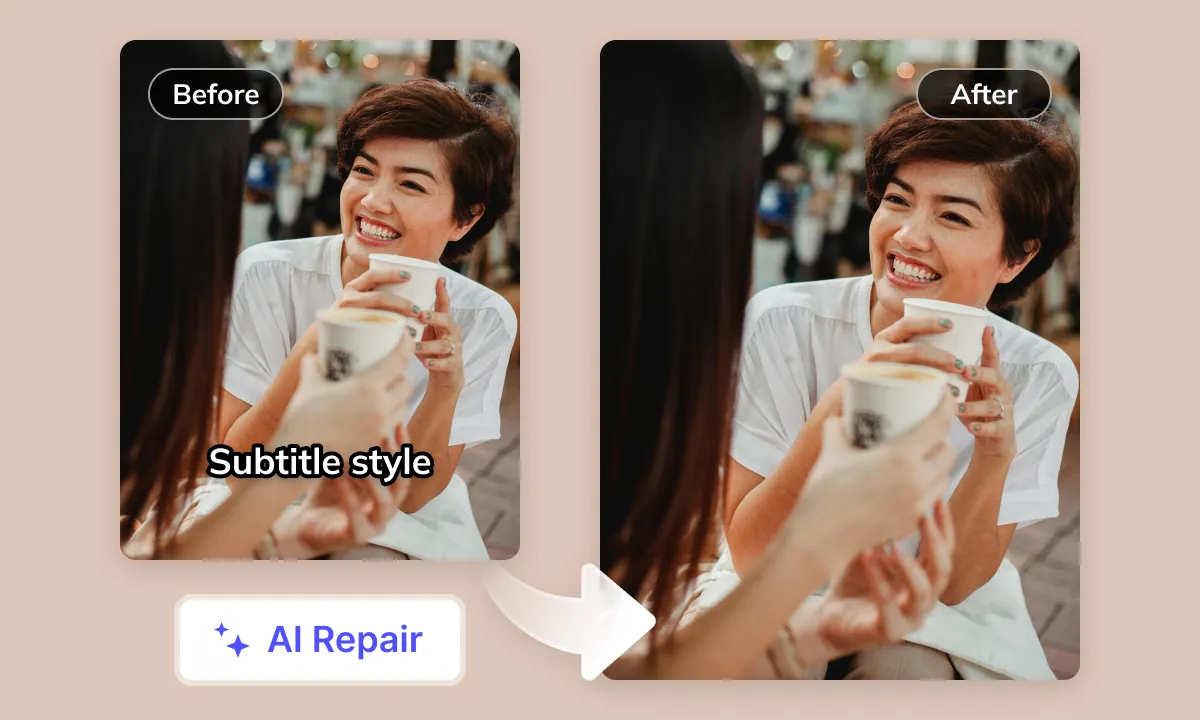

Smart Audio Control for YouTube Creators
Navigating BGM copyright on YouTube is tricky. GhostCut’s advanced audio separation isolates Japanese dialogue for translation, while intelligently managing BGM, sound effects, and even emotional expressions. Our "Keep SFX, Remove Music" option is a creator favorite for avoiding copyright issues without losing your video’s impact.
Translate NowYour Japanese Videos Deserve More Thai Viewers
Many great Japanese videosincluding anime clips, drama scenes, travel logs, and vlogsstruggle to reach Thai viewers due to language barriers. High-quality JP-to-Thai translation and dubbing is scarce on major platforms, limiting understanding and viewing experience for Thai users, and hindering content reach. The market urgently needs AI solutions for fast, accurate JP-to-Thai video translation and dubbing
Japanese to Thai Video Translation: Challenges and Considerations
Hardcoded Subtitles and Original Audio Issues
Improper handling of hardcoded Japanese subtitles or the original Japanese audio in videos can significantly impact the viewing experience and comprehension for Thai audiences
Linguistic, Cultural, and Contextual Differences
Japanese features a unique honorific system, complex particle usage, typical SOV (Subject-Object-Verb) word order, and a rich cultural background embedded in its vocabulary. These contrast sharply with Thai's SVO (Subject-Verb-Object) structure, tonal characteristics, and distinct cultural context. Literal translations often sound unnatural, fail to convey the original essence, or cause misunderstandings. Achieving accurate and idiomatic conversion is a core challenge
Subtitle Space and Layout Requirements
Japanese script (mixing Kanji and Kana) is information-dense in subtitles. Thai characters occupy different space, and tone marks affect line height. When converting Japanese content into natural-flowing Thai subtitles, careful consideration of characters per line, appropriate line breaks, and overall layout is crucial to prevent obscuring the screen or hindering readability
Pacing and Speech Rate Synchronization
The number of words and speech rhythm required to express the same concept or emotion differ between Japanese and Thai. A major challenge is ensuring accurate translation while maintaining good synchronization between Thai voiceovers or subtitles and the original video's visuals and speech rate
Limitations of Japanese AI Recognition
Dialects, specific proper nouns (names, places), fast-paced dialogue, and environmental noise interference in Japanese can all affect the accuracy of Automatic Speech Recognition (ASR) in capturing the original Japanese audio
Scarcity of High-Quality Thai AI Voices
While AI voiceover technology is rapidly advancing, generating natural, emotionally rich Thai AI voices that match different character ages and genders remains very challenging. High-quality Thai AI voice resources, especially those with correct tones and intonation, are relatively scarce
Precision Required for Lip-Sync Matching
Japanese and Thai pronunciations involve significant differences in mouth movements. When creating Thai voiceovers, striving for a relative match with the original video's Japanese lip movements poses extremely high technical and precision demands for post-production
Path to Ideal AI Translation
Top-tier AI video translation should achieve: high-precision Japanese recognition - idiomatic Thai translation considering linguistic structure, culture, and context - natural, fluent Thai AI voiceover with correct tones and emotion (with optimized lip-sync where possible) - intelligent audio-visual timeline alignment and editing
Tackling Video Translation Challenges with AI Empowering your Japanese content for any worldwide scenario.
Your All-in-One AI Translation Studio
GhostCut offers more than just Japanese-to-Thai translation. It's a complete AI-powered workflow: subtitle extraction 、 removal 、 translation and proofreading to multi-character dubbing , BGM processing, and final rendering. Go from Japanese source to global-ready videos, effortlessly.
